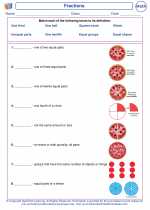Fractions
A fraction represents a part of a whole or a part of a group. It is written in the form of a numerator over a denominator, separated by a horizontal line. For example, in the fraction 3/4, 3 is the numerator and 4 is the denominator. The numerator represents the number of parts we have, and the denominator represents the total number of parts that make up a whole or a group.
Fractions can be used to represent parts of a whole, such as 1/2 representing half of something, or parts of a group, such as 3/5 representing three out of five total items.
There are different types of fractions, including proper fractions (where the numerator is less than the denominator, such as 1/3), improper fractions (where the numerator is greater than or equal to the denominator, such as 5/4), and mixed numbers (a whole number combined with a fraction, such as 2 1/3).
Operations with fractions include addition, subtraction, multiplication, and division. When adding or subtracting fractions, the denominators must be the same. When multiplying fractions, you simply multiply the numerators and denominators together. When dividing fractions, you multiply by the reciprocal of the second fraction.
[Fractions] Related Worksheets and Study Guides:
.◂Math Worksheets and Study Guides First Grade. Fractions

 Worksheet/Answer key
Worksheet/Answer key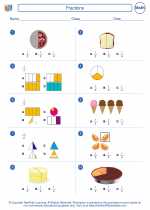
 Worksheet/Answer key
Worksheet/Answer key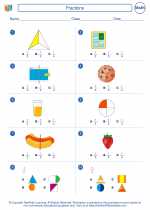
 Worksheet/Answer key
Worksheet/Answer key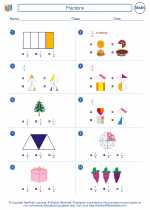
 Worksheet/Answer key
Worksheet/Answer key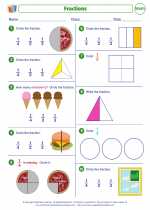
 Worksheet/Answer key
Worksheet/Answer key
 Worksheet/Answer key
Worksheet/Answer key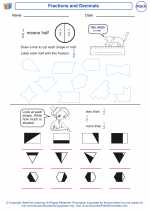
 Worksheet/Answer key
Worksheet/Answer key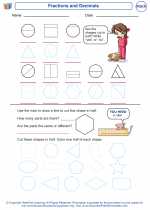
 Worksheet/Answer key
Worksheet/Answer key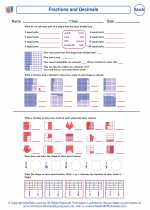
 Vocabulary/Answer key
Vocabulary/Answer key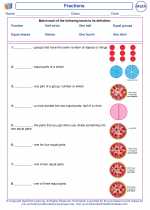
 Vocabulary/Answer key
Vocabulary/Answer key